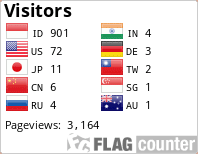EFEKTIVITAS PENDIDIKAN KESEHATAN HIPERTENSI PASCA COVID-19 MELALUI PENDEKATAN BUDAYA BUGIS WAJO TERHADAP TEKANAN DARAH LANSIA
DOI:
https://doi.org/10.31004/jkt.v4i4.18894Keywords:
Budaya, Diastolik, Pendidikan Kesehatan, SistolikAbstract
Gangguan kardiovaskuler merupakan pembunuh nomor satu di dunia. Gangguan kardiovaskuler yang sering terjadi adalah penyakit jantung koroner, penyakit jantung bawaan dan hipertensi. Lansia akan mengalami perubahan sistem dimana mengalami penurunan pada fungsi organ sehingga berbagai masalah kesehatan bisa muncul. Hipertensi telah menjadi masalah utama dalam kesehatan global. Indonesia termasuk dalam lima besar negara dengan jumlah lansia terbesar di dunia. Diperkirakan pada tahun 2025 jumlah lansia akan mencapai 36 juta jiwa dan hipertensi juga menjadi masalah kesehatan di Indonesia. Upaya yang dapat dilakukan untuk mengendalikan hipertensi adalah dengan meningkatkan pengetahuan dan pemahaman tentang penyakit hipertensi sehingga lansia dapat melakukan tindakan pencegahan sejak dini melalui kegiatan pendidikan kesehatan. Penelitian ini bertujuan untuk menganalisis efektivitas pendidikan kesehatan hipertensi pasca Covid-19 melalui pendekatan Budaya Bugis Wajo terhadap tekanan darah lansia. Penelitian ini menggunakan pendekatan kuantitatif dengan desain penelitian Pra-Experiment (One Group Pretest-Posttest). Penelitian ini dilakukan di Desa Nepo Kecamatan Tanasitolo Kabupaten Wajo Propinsi Sulawesi Selatan. Sampel penelitian ini diambil dengan teknik sampling yaitu purposive sampling yang menggunakan rumus slovin, sehingga jumlah responden yang berpatisipasi sebanyak 21 orang. Analisisi penelitian ini menujukkan bahwa ada efek Pendidikan Kesehatan Hipertensi Pasca Covid-19 Melalui Pendekatan Budaya Bugis Wajo Terhadap Tekanan Darah Lansia.References
Aba, M., Mahendika, M., Erlianawati, N. D., Faizah, A., & Hodayat, E. (2023). Pengaruh Edukasi “ CERDIK ” terhadap Pengetahuan Pra Lansia tentang Hipertensi. 17(June), 125–133.
Annindiya AH. (2012). Evaluasi Tingkat Kepatuhan Penggunaan Obat pada Pasien Hipertensi di Instalasi Rawat Jalan RSUD “X.” Jurnal Universitas Muhammadiyah Surakarta.
de Lima, J. P., Abreu, D. P. G., Bandeira, E. de O., Brum, A. N., Garlet, B. B., & Martins, N. F. F. (2020). Functional health literacy in older adults with hypertension in the Family Health Strategy. Revista Brasileira de Enfermagem, 73(Suppl 3), 1–8. https://doi.org/10.1590/0034-7167-2019-0848
Farhadi, F., Aliyari, R., Ebrahimi, H., Hashemi, H., Emamian, M. H., & Fotouhi, A. (2023). Prevalence of uncontrolled hypertension and its associated factors in 50–74 years old Iranian adults: a population-based study. BMC Cardiovascular Disorders, 23(1), 1–10. https://doi.org/10.1186/s12872-023-03357-x
Gross, B., Anderson, E. F., Busby, S., et al. (2013). Using culturally sensitive education to improve adherence with anti-hypertension regimen. Journal of Cultural Diversity, 20, 75-79.
Hakim, B.P. & Lubis. 2022. Pengaruh Pendidikan Kesehatan Menggunakan Metode Tudang Sipulung terhadap Pengetahuan Tentang Pencegahan Gastritis di SMAN 2 Luwu. 5(2), 88-95.
Kemenkes RI. (2013). Gambaran Kesehatan Lanjut Usia di Indonesia. Buletin Jendela : Jakarta.
Lolo, L. L., & Sumiati, S. (2019). Dampak Edukasi Hipertensi Berbasis Budaya Luwu Terhadap Pengetahuan Penderita Hipertensi. Voice of Midwifery, 9(1), 823–832. https://doi.org/10.35906/vom.v9i1.82
Mahmuda, I. R., Roisah, & Salam, A. Y. (2023). Pengaruh Edukasi Emo-Demo Terhadap Kepatuhan Minum Obat Pasien Hipertensi Pada Peserta Prolani. Jurnal Rumpun Ilmu Kesehatan(JRIK), 3(2), 176–188.
Meredith, A. H., Schmelz, A. N., Dawkins, E., & Carter, A. (2020). Group education program for hypertension control. Journal of Clinical Hypertension, 22(11), 2146–2151. https://doi.org/10.1111/jch.14022
Miranda, R., Meeks, K. A. C., Snijder, M. B., Van Den Born, B. J., Fransen, M. P., Peters, R. J., Stronks, K., & Agyemang, C. (2020). Health literacy and hypertension outcomes in a multi-ethnic population: The HELIUS study. European Journal of Public Health, 30(3), 545–550. https://doi.org/10.1093/eurpub/ckz174
Ni, W., Yuan, X., Zhang, J., Li, P., Zhang, H. M., Zhang, Y., & Xu, J. (2021). Factors associated with treatment and control of hypertension among elderly adults in Shenzhen, China: A large-scale cross-sectional study. BMJ Open, 11(8), 1–10. https://doi.org/10.1136/bmjopen-2020-044892
Nielsen-Bohlman, L. (2004). Health literacy. United states: Institutes of Medicine.
Sheilini, M., Hande, H. M., Devi, E. S., Kamath, A., Nayak, B. S., Morisky, D. E., & George, A. (2022). Determinants of Adherence to Antihypertensives Among Elderly: A Multifactorial Concern. Patient Preference and Adherence, 16(December), 3185–3193. https://doi.org/10.2147/PPA.S389437
Uchmanowicz, B., Chudiak, A., Uchmanowicz, I., Rosi?czuk, J., & Froelicher, E. S. (2018). Factors influencing adherence to treatment in older adults with hypertension. Clinical Interventions in Aging, 13, 2425–2441. https://doi.org/10.2147/CIA.S182881
Xing, W., Wang, S., Liu, X., Jiang, J., Zhao, Q., Wang, Y., Zhang, Y., & Gao, C. (2023). Prevalence and management of hypertension in Central China: a cross-sectional survey. Journal of International Medical Research, 51(1). https://doi.org/10.1177/03000605221148905
Zhang, M., Shi, Y., Zhou, B., Huang, Z., Zhao, Z., Li, C., Zhang, X., Han, G., Peng, K., Li, X., Wang, Y., Ezzati, M., Wang, L., & Li, Y. (2023). Prevalence, awareness, treatment, and control of hypertension in China, 2004-18: findings from six rounds of a national survey. Bmj. https://doi.org/10.1136/bmj-2022-071952
Downloads
Published
Issue
Section
License
Copyright (c) 2023 Ruslang Ruslang, Ery Wardanengsih, Lisna Lisna, Nirmawati Darwis, Abdul Ba'iz Mus'ing

This work is licensed under a Creative Commons Attribution-ShareAlike 4.0 International License.
Authors who publish with this journal agree to the following terms:
- Authors retain copyright and grant the journal right of first publication with the work simultaneously licensed under a Creative Commons Attribution License that allows others to share the work with an acknowledgement of the work’s authorship and initial publication in this journal.
- Authors are able to enter into separate, additional contractual arrangements for the non-exclusive distribution of the journal’s published version of the work (e.g., post it to an institutional repository or publish it in a book), with an acknowledgement of its initial publication in this journal.
- Authors are permitted and encouraged to post their work online (e.g., in institutional repositories or on their website) prior to and during the submission process, as it can lead to productive exchanges, as well as earlier and greater citation of published work (See The Effect of Open Access).





